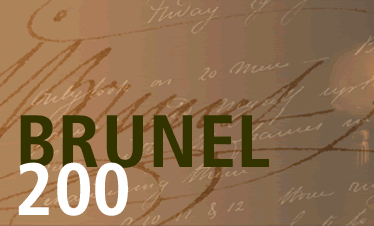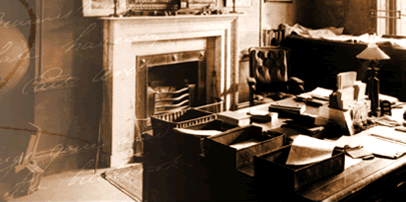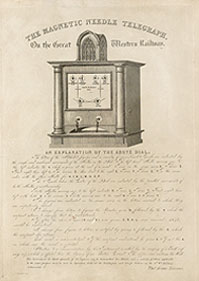


Explanatory leaflet for the Magnetic
Needle Telegraph (National Trust)






Communications
The telegraph, a major breakthrough in communications, was patented in
1837 by Charles Wheatstone (1802-1875) and William Cooke (1806-1879).
Brunel, Stephenson and others installed the telegraph system along their
railways to improve scheduling and management. The distance between trains
could now be thought of in blocks of time rather than blocks of space,
and standard time became essential for maintaining timetables.
By the late 1840s, use of the telegraph had developed beyond the railway
tracks. A durable submarine telegraph line connected Britain to France
in 1851 using a rubber-like substance for insulation, obtained from Malaya,
called gutta-percha. Brunel’s ship the ss Great Eastern successfully
laid a trans-Atlantic cable in 1866. By 1880, Britain was linked by miles
of telegraph cabling trailing through the world’s oceans to Canada,
India, Australia, Africa and other reaches of the Empire.
Other communication developments hastened by the new technologies, included
the mass production of cheap, popular magazines, newspapers and books
from the 1830s onwards, and the first public postal service (1840).
